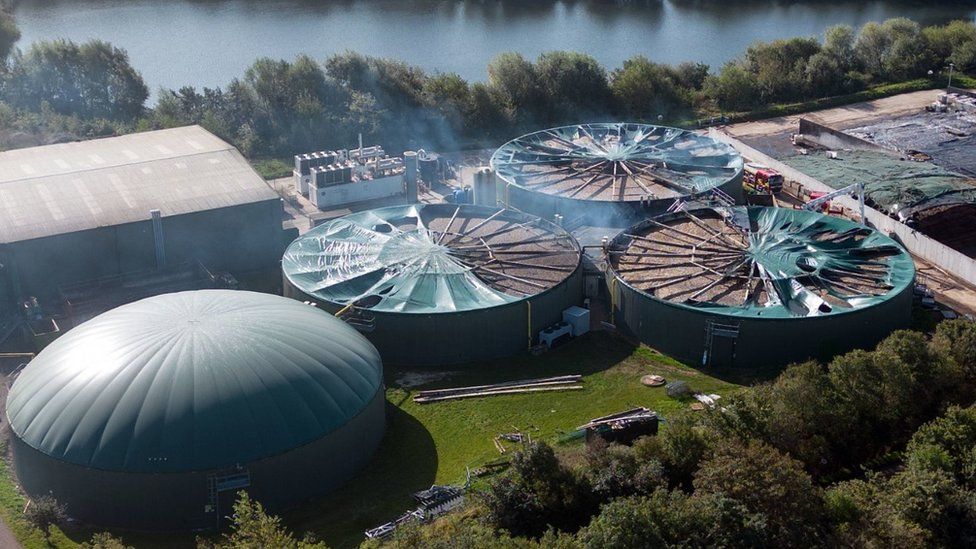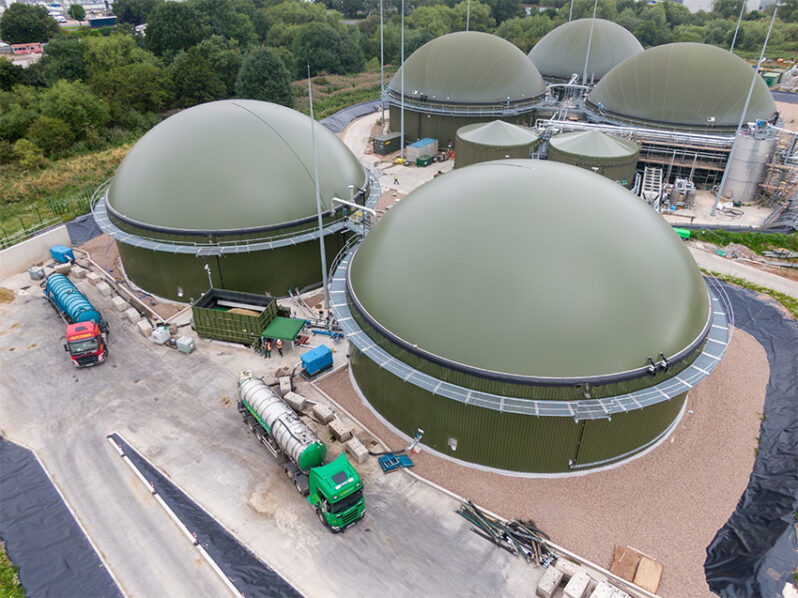Possible lightning strike causes gas tank to explode in Oxford processing facility near Yarnton
Possible lightning strike causes gas tank to explode in Oxford processing facility near Yarnton
I think that the concensus is that the contents of 3 of the 5 digestor tanks were ignited once the relativly soft plastic roofs had given way link to BBC article. Spectacular but far preferable to the concrete sides being blown out.
By the look of it if there was a lightning mast or tower to provide top cover at all, it did not work as expected - perhaps there will be more in future.

A similar site in Derby is just being re-built link I note the masts in that photo are very prominent.

From the website
Mike.
I don't see any vents on the top of those tanks. I assume they harvest the Methane to run some kind of gas powered turbine generator. I wonder what levels of flamable/explosives gases they deem acceptable in the storage tanks? With Methane being lighter than air at room tempreture it should be quite simple to vent the space inside the tanks.
??? The top of the tank tank is supposed to be full of methane, or at least 'biogas', which is a mix of methane and carbon dioxide, and small percetages of other smellier things -it is adding air (oxygen) that makes it very dangeorus. The lower concrete 'ring' part is to contain the sludge being digested and as that gugles and gloops, the gas is collected under the cap above. In many ways it is bucket chemistry.
If the biogas has to be injected into the gas mains, or used in turbines, then it is 'upgraded' to remove the non-methane parts as much as possible, mainly by dissolveing the CO2 and sulpher compounds in water and forcing though a filter, however the raw biogas may be burnt on-site for combined heat and power generation in suitably tolerant hardware.
In this case it was burnt on site all right but burnt to waste, sadly.
Mike.
??? The top of the tank tank is supposed to be full of methane, or at least 'biogas', which is a mix of methane and carbon dioxide, and small percetages of other smellier things -it is adding air (oxygen) that makes it very dangeorus. The lower concrete 'ring' part is to contain the sludge being digested and as that gugles and gloops, the gas is collected under the cap above. In many ways it is bucket chemistry.
If the biogas has to be injected into the gas mains, or used in turbines, then it is 'upgraded' to remove the non-methane parts as much as possible, mainly by dissolveing the CO2 and sulpher compounds in water and forcing though a filter, however the raw biogas may be burnt on-site for combined heat and power generation in suitably tolerant hardware.
In this case it was burnt on site all right but burnt to waste, sadly.
Mike.
We're about to take you to the IET registration website. Don't worry though, you'll be sent straight back to the community after completing the registration.
Continue to the IET registration site